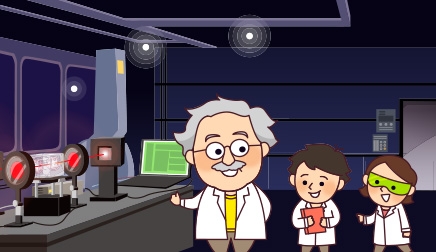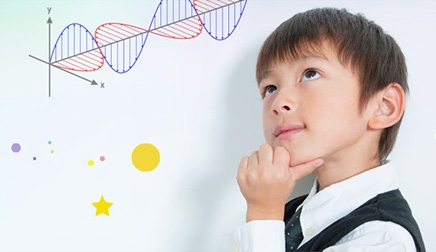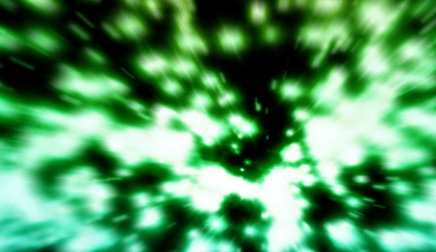 Home > Professor lights > Vol.07 Masato SHIOZAWA
Home > Professor lights > Vol.07 Masato SHIOZAWA
Vol.07 Masato SHIOZAWA
Witnessing the “miracle”
moments at Super-Kamiokande
led Hyper-Kamiokande
that will provide the world
a place for “discoveries”

Masato SHIOZAWA
Director and professor
Kamioka Observatory, Institute for Cosmic Ray Research, The University of Tokyo
Discoveries of the century that defined my life
The 20-year road to Hyper-Kamiokande
Wearing two hats as a director of the Observatory and a spokesperson of the Hyper-Kamiokande project
Japan's position in elementary particle research
Discoveries of the century that defined my life
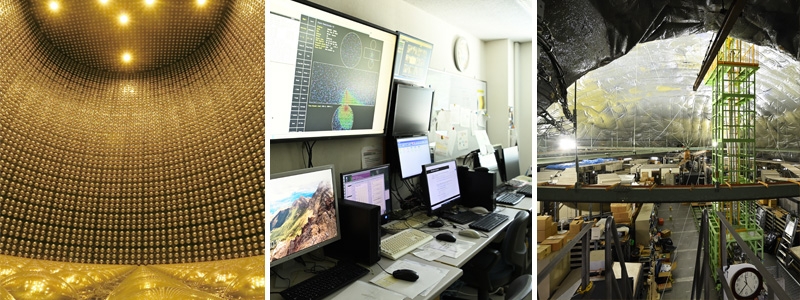
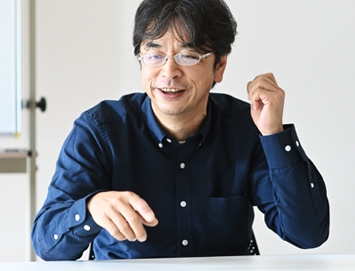
“Super-Kamiokande was built in my fourth year of graduate school and I have been involved with this detector ever since. Now some 26 years have passed since then. Well, at about one year after Super-Kamiokande started operation, everyone was very excited saying, “We did it, we captured proton decay data!”
Proton decay is a process in which a proton, which is a fundamental particle that forms matter, decays into lighter particles. This is predicted in the Grand Unified Theories that collectively explains the three forces (weak force, electromagnetic force and strong force) acting on matter.…
“One year later, neutrino oscillations were also discovered, so we were simultaneously analyzing the data on proton decay and neutrino oscillations. That task was tough but interesting, making us wonder what is actually taking place.”
Unfortunately, however, after analyzing in detail the “proton decay” we thought to have discovered, we found it was not “proton decay”.
”As shown in this image, if a proton decays, three lighter particles will be released, and when each particle passes through the water at a high speed, it emits light called a Cherenkov ring. At that time, we did indeed see a ring consistent with proton decay. But when neutrinos collide with water molecules, we sometimes observe a ring of light similar to that generated by proton decay. So, there are in fact rare cases where a ring produced by a neutrino is misidentified as a ring generated by proton decay.”
At Super-Kamiokande, about 8 atmospheric neutrinos are observed every day. This is nearly 3,000 per year. So it is very possible that proton decay is mixed in among these.
“In fact, there are different patterns of light elementary particles that are emitted in proton decay. What I found was a pattern that most resembled the pattern of proton decay. It's the pattern predicted by many Grand Unified Theories. I know it when I see it. Since then, the same pattern has not been discovered until now."
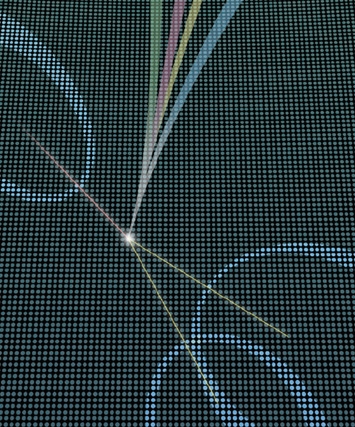
The 20-year road to Hyper-Kamiokande
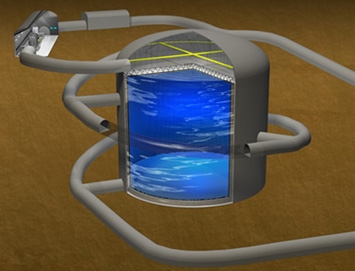
Super-Kamiokande started operation in 1996 and achieved significant results in just a few years. So, as early as 1998, researchers began discussing the next phase of research. Some researchers started saying, “We want to do experiments providing even more sensitivity by building a water tank bigger than the tank at Super-Kamiokande” and one of them was Prof. Shiozawa. To make his concept a reality, he has been working from various angles for nearly 20 years.
“I worked on optimizing the experimental equipment, improving optical sensor performance and seeking international cooperation. I also went to the government to explain our progress to get funding for the project. More than a decade had passed very quickly and in the meantime I also heard the news that the neutrino program in the United States had received government funding. This was around 2017.”
If the research in the United States went ahead while the research in Japan was not adequately funded, then Japan might fall behind the United States, even though we were supposed to be the leader in neutrino research at that time. The brilliant achievements that were made through the discoveries at Kamiokande and Super-Kamiokande and brought two Nobel Prizes to Japan might fade away.
At the brink of all these events, the Hyper-Kamiokande project finally received governmental funding.
“We received strong support from influential people who agreed with the Hyper-Kamiokande project. There was also a desire not to be left behind by other countries. At that point, we had already gathered some international members but they couldn’t officially join us unless the project actually got funding in Japan. It was just in time.”
In February, 2020, the Hyper-Kamiokande project was officially launched and construction of the world's largest detector for proton decay and neutrino experiments began. About 500 researchers from 20 countries all over the world are currently collaborating on this international collaborative project which has finally begun to move forward with the aim of starting experiments in 2027.
Wearing two hats as a director of the Observatory and a spokesperson of the Hyper-Kamiokande project
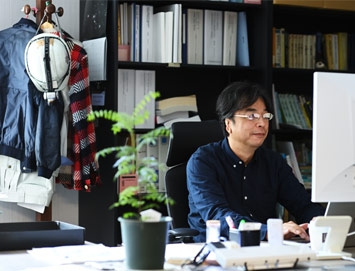
In April, 2022, Prof. Shiozawa took over from Prof. Masayuki Nakahata who served as the third director of the Observatory, and was appointed the fourth director. Prof. Shiozawa now wears two hats as both director of the Observatory and spokesperson of the Hyper-Kamiokande project. We first of all asked him what his thoughts were when assuming the position of director.
“I feel very responsible for what happens there. To date, we have achieved results at Super-Kamiokande for more than 20 years and the project has been granted funding for all of that time, so we have been very fortunate. We must make the next Hyper-Kamiokande a success while keeping all these facts in mind. There are a lot of things I have to do as the director.”
Compared to Super-Kamiokande, Hyper-Kamiokande has a larger budget and larger human resources. There are some 500 researchers from Japan and overseas at this time who will participate in the Hyper-Kamiokande project. We must welcome and accept these people as "users" of the Observatory and create a good research environment.
“Here, we call them collaborators. This Observatory including the main section of the Institute for Cosmic Ray Research (ICRR) was originally intended for joint use. We build and operate experimental equipment there and it's available for the benefit of all users.”
Doing things this way helps all members work together to build and run a large facility. It will also be jointly used. So, to ensure proper joint use, the director’s job includes providing housing and meals for the users, and managing their safety. This job must be carried out to make sure everything is in place to properly operate the facility and satisfy the users. On the other hand, Prof. Shiozawa is also one of the co-leaders of a research group of 500 researchers from Japan and overseas. This work has moved beyond the stage of inviting researchers from around the world and is entering the next stage.
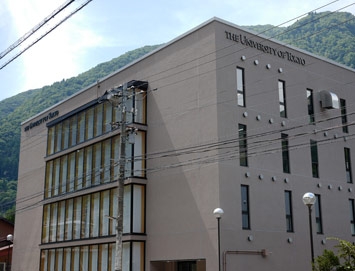
“Now the main focus is on budgeting and building equipment. This should be done not only in Japan but also in other countries. By this I mean that overseas parties should get funding to build their equipment and then bring it to the Hyper-Kamiokande. Since the construction schedule for Hyper-Kamiokande has already been established, the overseas budgeting and equipment manufacturing must take place to match this schedule, or big problems will occur. Without the necessary budget we need to think hard about who will shoulder the cost of the project.”
The timing of our interview was right in the middle of all these adjustments, and online meetings were being held daily.
Researchers from more than 20 countries are involved in the Hyper-Kamiokande project. What is the general feeling at these meetings where people get together to exchange opinions and come to agreements on issues?
“The field of particle physics experiments we are in has not changed since I was a graduate student. To put it in a word, everyone in this field behaves like a lion. In other words, they are not afraid to fight.”
When Prof. Shiozawa refers to a "fight," he means an open and free exchange of opinions. All of us have this same awareness of the need to discuss the issues logically and bring them to a good conclusion.
“What can I say, there are a lot of oddballs out there. Well, quite interesting people depending on how you look at. Everyone is particular about what they do and exchanges their opinions while honestly expressing their particular view. People from other worlds might be surprised to see it.”
And finally, a conclusion is reached democratically. If no consensus is reached, a majority decision may be taken. Everyone seems to have no complaints even if the conclusion differs from one’s own opinion.
Japan's position in elementary particle research
Well, how does Japan, where the construction of Hyper-Kamiokande is underway, stand in the field of particle research such as for proton decay and neutrinos?
“What I can say for sure is that Japan has made several breakthroughs in this research field with the Kamiokande and Super-Kamiokande detectors. At Kamiokande, neutrinos from a supernova explosion were captured for the first time in the world, opening up a new field of science called neutrino astronomy. Super-Kamiokande discovered neutrino oscillations. It did not end there and has since generated many more research projects. You might even say that we pioneered the future of this research field."
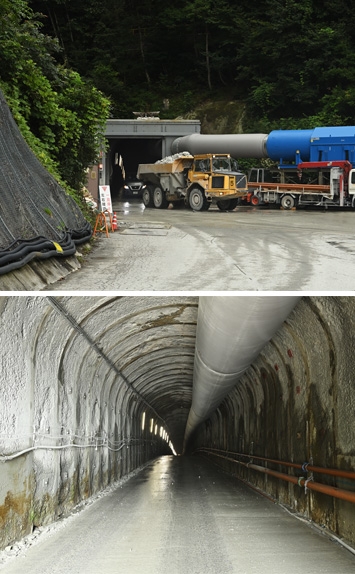
Was this possible because of Japan?
“It is significant that we were blessed with the right conditions. Hida region in Japan has a land with solid bedrock where the Super-Kamiokande was to be built, and there was already an underground tunnel of the Kamioka mine. Plus, there was an abundance of groundwater and we had Hamamatsu Photonics optical sensors available and ready to use."
“From my point of view, these were all miracles," repeated Prof. Shiozawa. In fact, these were not the only miracles.
“There’s a research institute called the High Energy Accelerator Research Organization (known as KEK), about 300 km away, where an artificial neutrino beam could be created to shoot it toward Super-Kamiokande. That beam allowed us to verify neutrino oscillations.”
Neutrino oscillations are said to be easiest to detect when a neutrino beam is shot from a distance of about 300 km. Because all of these conditions were fortunately available, we could see the "miracle" of being able to verify and confirm neutrino oscillations for the first time in the world using artificial neutrinos.
Preparations are steadily progressing for Hyper-Kamiokande to begin operations in 2027. There are high expectations for the observation of proton decay that was not found in Super-Kamiokande, so we asked Prof. Shiozawa what he thinks about this.
“Actually, the only thing on my mind right now is how to complete the Hyper-Kamiokande detector with the performance and schedule as planned. Yet, I really don't know if we can actually find proton decay.” However, Prof. Shiozawa's strong belief seems to be, "I will do it because I believe I can find it.”
Wanting to unravel the complex in a simple way
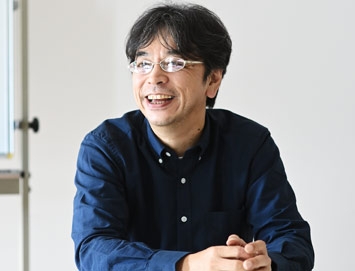
Prof. shiozawa is now leading a world-class project, but what dreams did he have as a child that made an impact on him?
“I didn't have such dreams at the time. I was busy playing in the mountains and rivers. I loved nature, fishing and collecting kuwagata (stag beetles)."
He still loves kuwagata. While driving, when he sees a place where he thinks he might find kuwagata, he stops the car and goes to check it out. On the other hand, he kept having a desire to solve complex things by applying simple laws and formulas.
“Relativity and quantum theory are complicated to study and I'm not exactly sure what elementary particles are either. For example, we are now told that there are first, second, and third generation elementary particles. But each generation only differs in weight, and their other properties are exact copies of each other. This naturally makes us start thinking that there is just one underlying theory which has somehow been divided into three. Anyway, I want to know the one theory behind all of this.”
Prof. Shiozawa continues to be involved in proton decay research for the same reasons. Proton decay is a phenomenon predicted by Grand Unified Theories. “I think it can in fact be discovered," says Prof. Shiozawa.
Last of all, we asked Prof. Shiozawa what his own personal motto is. The reply, however, was "none”, yet he told this story: “When I was in high school, I used to think, ‘If you don't know about something, try it, and once you’ve tried it, you’ll start to know about it.’ The result may be successful or unsuccessful, but something can still be gained along the way. I just want to stay flexible about things, and that’s about it."
For today’s young people who will play vital roles in the future, he has the following message:
“Young people today have easy access to smartphones and other convenient tools, so I think you can find happiness easier compared to our generation. Even so, it would be good to keep a broad perspective and find lots of things you want to try and enjoy doing. If you devote some time to working on one of those things, it could become a nice hobby or maybe even a worthwhile job for you."
Prof. Shiozawa first encountered neutrinos when he was 20 years old and has since then continued to be involved in the forefront of elementary particle research in Japan. We could tell that he was dealing with his work and life in a really natural way. Even in today's world filled with easy ways to happiness, doing something you can be passionate about or working on an “unfamiliar thing” you just noticed and enjoying it may bring a whole new dimension to your life.
Side story
Does proton decay occur in our bodies?
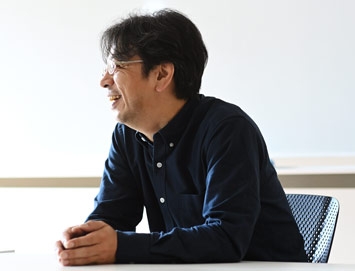
The nucleus is at the center of the atoms that form our bodies. This nucleus is made up of protons and neutrons, and these protons have a life span. All matter will at some time decay. --- This is the "proton decay" predicted by the Grand Unified Theories. So, since our bodies are also made of matter, does this mean that proton decay occurs in our bodies? We asked Prof. Shiozawa about this.
“Yes, proton decay occurs in our bodies as well. But even if it does happen, we would not feel anything and nothing would happen to our bodies. In our experiments, water is used to catch the light generated by proton decay. So, after detecting that light, we found that the proton had in fact decayed. However, our bodies are not transparent, so even if light from proton decay were emitted, it could not leave our bodies. It is also an extremely faint phenomenon, so we won’t feel anything at all."
The Grand Unified Theories and proton decay sound like something very far away from our everyday lives. However, when you think about it happening inside our own body, it becomes a much more familiar topic. Science may actually begin with an interest in familiar things. When you find something you "don't understand," try to investigate it. Sometimes it can be fun to put your smartphone aside and take a fresh look at the wonders around you.




